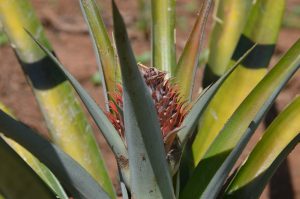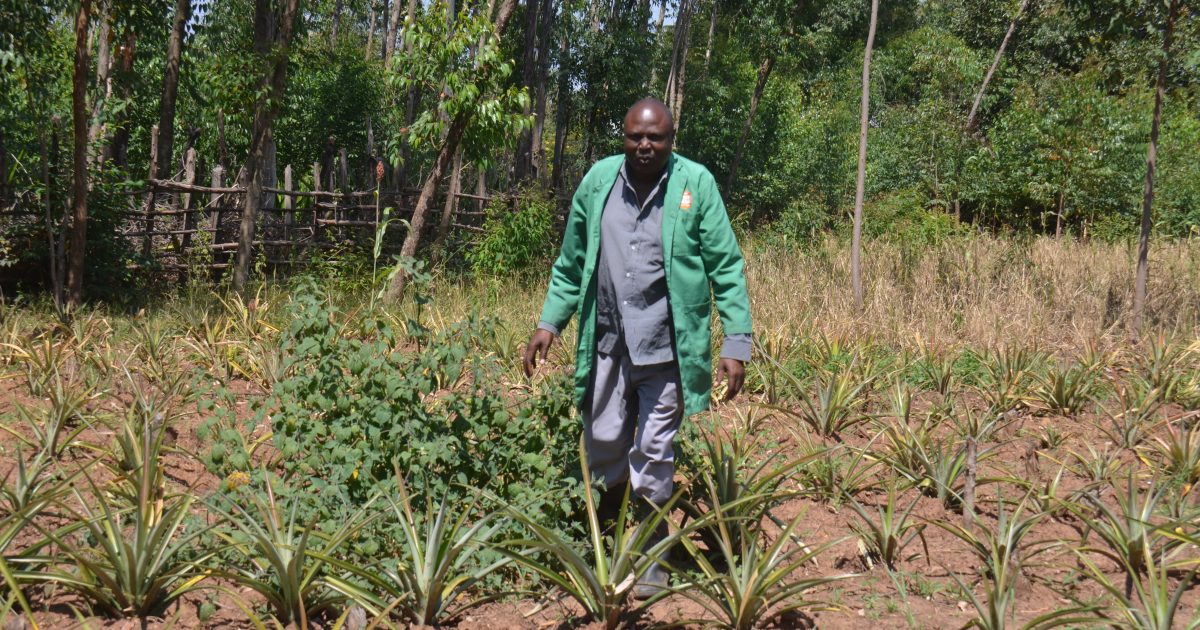Pineapple farming has become a lucrative enterprise among Kenyan farmers, with the majority of counties joining the traditional growing of the crop.
For the longest period of time, the Coastal regions, notably Kilifi, Taita Taveta, and Kwale, have been the traditional pineapple growers in Kenya.
However, in recent years, Central Kenya and Eastern Counties have also followed suit and opened doors for other counties in pursuit of lucrative agribusiness.
Delmonte Farm in Thika still remains the noblest pineapple farm in the country, supported by various small-scale farmers across the country.
In Migori County, one farmer has defied the odds by venturing into pineapple production, a rare farming activity in Migori County.
Joseph Magaiwa, a farmer from Mabera Sub County in Kuria, says that he decided to venture into pineapple production because of its lucrative nature and the fruit gap within the Nyanza region.
He also added that the exploitation of middlemen and bad prices in maize and sweet potato production have made the enterprise less lucrative in recent years.
According to Kenya Agricultural and Livestock Research (KARLO), it is estimated that the country produced 247,000 metric tonnes of pineapple in 2021, with a growth rate of 2.3 percent annually.
Food and Agriculture Organisation (FAO) also placed Kenya at position 25 worldwide in terms of pineapple production, with an estimation that by 2026, the country will be able to produce over 300,000 metric tonnes with more farmers like Magaiwa coming on board.

Migori County has favourable climatic conditions that can allow for the growth of pineapples, a tropical crop that requires a warm climate of between 21 and 32 degrees and fertile soils with 600–1500 mm of annual rainfall.
Magaiwa’s three acres have more than 15,000 pineapples of the smooth cayenne variety that will be ready for harvest in October.
Smooth cayenne is a pineapple variety that produces notable yields and has a sweet taste compared to other varieties.
In the Nyanza region, pineapples are only grown by small-scale farmers, with a high production coming from Homa Bay County, a gap that Magaiwa wants to fill to reap the benefits of the business venture.
The first-time pineapple farmer has high expectations that the production will encourage other small-scale farmers in the South Nyanza region to follow suit.
He emphasised that his pineapples will be able to generate between 700,000 and 1 million depending on market prices.
He says that generally, the price of the pineapple will depend on the size, but the smallest-sized ones can range between Sh60 and Sh70.
The Magaiwa pineapple farm is purely run on organic fertiliser and traditional chemical use. The farmer uses organic fertiliser from his cows, goats, and poultry production to sustain pineapple production and other crops on his farm.
He has been using ash to control nematodes as a traditional bacteria control method, which has greatly reduced his input expenditures.
Dish soap is also used to prevent pests like scale insects and aphids that cause pineapple leaves to turn yellow and finally wither.
The acidic soils of Migori, especially in Kuria, where tobacco farming was largely practised, make them even more ideal for helping to reduce the chances of pineapple plants being affected by soil-borne diseases.
He disclosed that monitoring the plant regularly through weeding was also a major factor in pineapple farming.
“Intercropping is the best practise for ensuring regular weeding in pineapples, but the crops being intercropped should be of lower or the same height as the pineapple plant itself,” affirmed Magaiwa.
According to Magaiwa, the biggest challenge in pineapple farming is the outsourcing of seedlings, an expensive affair in terms of purchase that tends to discourage the majority of willing farmers.
“I was forced to source pineapple suckers from small-scale farmers in the region as well as travel all the way to Geita in Tanzania, where the majority of farmers grow pineapple,” disclosed Magaiwa.
Magaiwa pineapple market will be in the Nyanza region, where demand is always high. Migori County, for example, has been over-relying on the pineapples brought from Tanzania, but the supply is still not enough.
He is now urging other residents to venture into profitable enterprises in order to boost their agricultural income instead of over-depending on maize and sugar cane farming.
By Geoffrey Makokha and George Agimba





